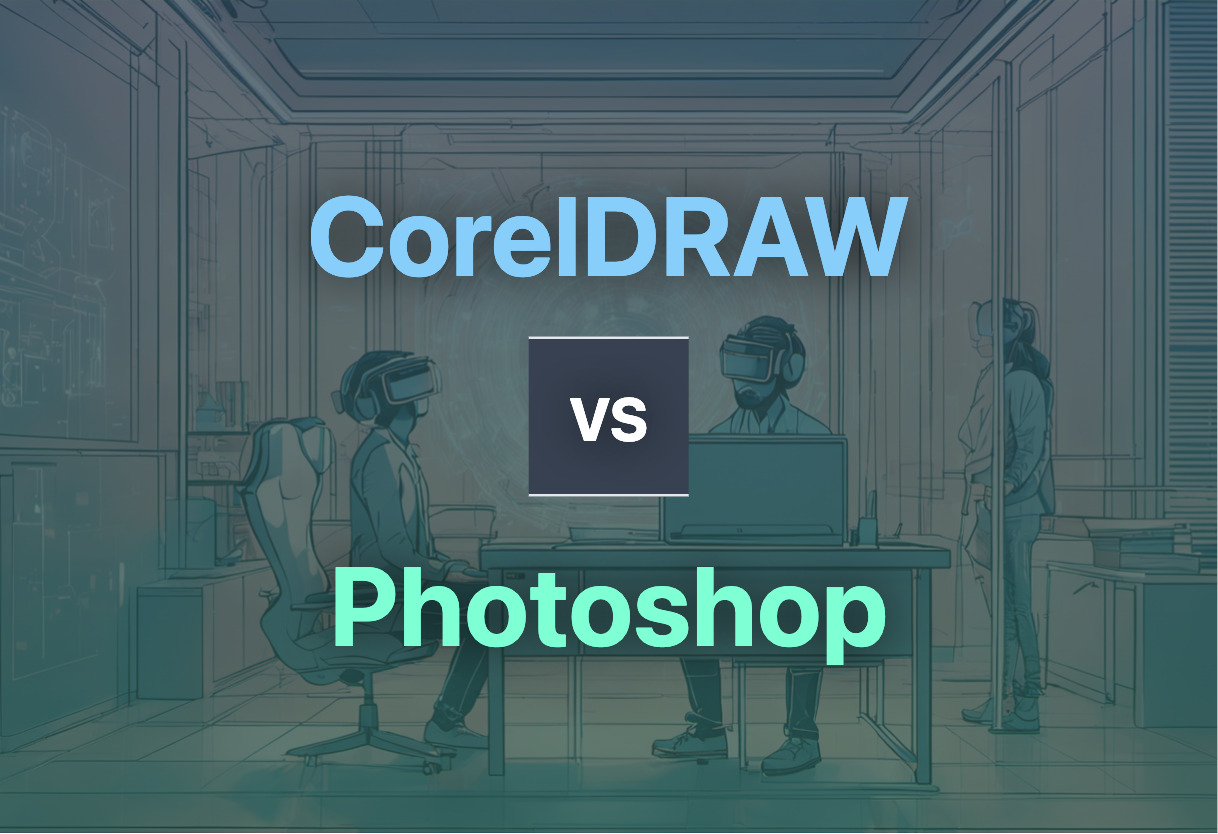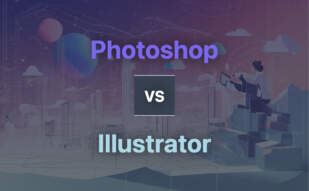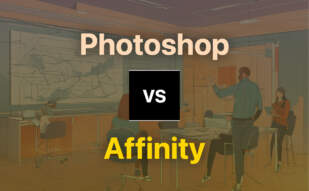For vector design, organization, and typography, choose CorelDRAW. However, for unrivaled raster graphics editing, digital art, or photo manipulation, opt for Photoshop. Decide based on your project specifics and medium.

Key Differences Between CorelDRAW and Photoshop
- CorelDRAW excels in vector illustration, layout, typography, and has superior collaboration features, updating continually via subscription model.
- Photoshop rules the realm of raster graphics editing, embedding in history as a potent digital art tool, and forms part of Adobe Creative Cloud.
- CorelDRAW has a flexible purchasing model, offering both one-time purchase and subscription options while Photoshop is subscription-based under Adobe Creative Cloud.
- CorelDRAW can optimize color output for both print and web design, whereas Photoshop is concentrated on high-end graphics and photo editing.
| Comparison | CorelDRAW | Photoshop |
|---|---|---|
| Primary Function | A complete design suite for vector illustration, layout, photo editing, and typography. | An image creation, graphic design, and photo editing software. |
| Major Sectors Using the Tool | Retail, E-commerce, Engineering, Manufacturing, Construction, Illustration, Art | Graphic Designers, Web Developers, Photographers, Illustrators |
| Subscription Model | Yes, access to new features, content, and support for latest technologies. | Yes, part of Adobe Creative Cloud. |
| Advanced Editing Features | Focus Mode, Advanced Print Merge Workflow, AI-assisted PowerTRACE. | Layers, Adjustment Layers, History Panel, Regular Healing Brush, Clone Stamp Tool, Crop Tool, Color Balance, Levels, Curves, Blending Modes. |
| Compatibility | Windows and Mac | Windows and macOS |
| Additional Applications | CorelDRAW Graphics Suite | Photoshop Elements, Photoshop Lightroom, Photoshop Express, Photoshop Fix, Adobe Illustrator, Photoshop Mix. |
| Types of Projects | Brand identity creation, sales tools, large-format printing, apparel and textile design, digital advertising, web design. | Graphics and layouts for print projects, website designs, logos, digital art. |
What Is CorelDRAW and Who’s It For?
CorelDRAW represents a professional design suite catering to various sectors including retail, e-commerce, engineering, and art. The suite provides tools for layout, vector illustration, photo editing, and typography. With cloud-based features, it allows non-destructive editing of bitmaps and vectors while offering a subscription model inclusive of new features and support for the latest tech.
This versatile software is crucial for businesses across sizes and sectors, highly beneficial for graphic professionals in big corporations to small business creatives. From brand identity creation and digital advertising to large-format printing and web design, CorelDRAW has it all.

Pros of CorelDRAW
- Comprehensive toolset for various design needs
- Cloud-based features exclusive to subscribers
- Ensures colour consistency across different media
- Compatible with Windows and Mac
- Subscription and one-time purchase options
Cons of CorelDRAW
- Potentially complex for beginners
- Subscription model may not appeal to all users
- Limited collaborative features when compared to competitors
What Is Photoshop and Who’s It For?
Photoshop, developed by Adobe, is a globally acclaimed software pivotal to professional digital art and raster graphics editing. Introduced in 1988, Photoshop has now become synonymous with image editing, offering features like layers, adjustment layers, history panel, and range of tools for colour adjusting and editing.
Mainly used by professionals like Graphic Designers, Web Developers, Photographers, and Illustrators, it caters to a variety of projects from designing logos and print layouts, to creating digital art and website designs.

Pros of Photoshop
- Strong capabilities for raster image editing
- Multiple features and tools for versatile design needs
- Layer-based editing system for detailed image creation
- Expanded reach via plugins offering new/enhanced features
- Part of Adobe Creative Cloud
Cons of Photoshop
- Steep learning curve for beginners
- Subscription model might not be preferred by some users
- Hardware-intensive, requiring high-spec computers for optimal performance
Crossing Brushes: CorelDRAW or Photoshop?
Graphics design world is divided between two major powerhouses – CorelDRAW and Photoshop. Let’s draw the line.
Graphic Design Professionals
For Graphic Design professionals dealing in print projects, logos, and digital art, Photoshop’s layer-based system, with an arsenal of tools like Clone Stamp, Healing Brush, and Blur, provides a versatile graphics playground. Also, its PSD and PSB file formats support a multitude of features.
Web Developers & E-commerce
Web Developers and E-commerce sector might prefer CorelDRAW with its cloud-based features and mobile editing capabilities recognising the need for on-the-go adjustments and collaboration. Its versatile design space, multi-page view, and multi-asset export ease web design output.
Photographers
Photographers should lean towards Photoshop’s raster image creation and editing capabilities. With tools for detailed color adjustments and image manipulations, it provides unprecedented creative flexibility.
In the tug of war between CorelDRAW and Photoshop, if you’re a print or digital artist, Photoshop might be your go-to. However, for collaborators seeking cloud-based features and mobile editing, CorelDRAW edges out. Choose judiciously, evolving with your design needs.
Logan Bellbrook
Content writer @ Aircada with a knack for nature & AR/VR/XR. Blogging the intersection of tech & terrain.





